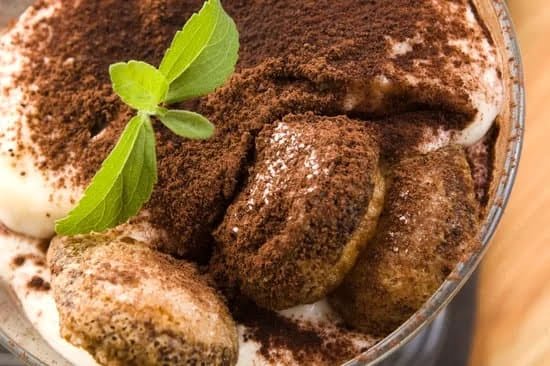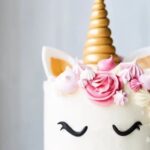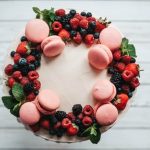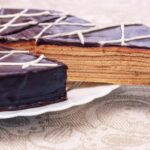Cake decorating is a popular and satisfying hobby that allows individuals to unleash their creativity, turning simple cakes into visually captivating works of art. The process of transforming a plain cake into a beautifully decorated masterpiece is an art form in itself, combining techniques, tools, and artistic vision. Whether it’s using fondant to mold intricate designs, piping buttercream frosting onto cakes, or creating delicate patterns with royal icing, cake decorating offers endless possibilities for stunning creations.
The joy of cake decorating comes from the ability to personalize and customize each cake according to one’s own preferences and occasion. From birthday parties to weddings, cakes are often the centerpiece of any celebration, and being able to create a cake that not only tastes delicious but also impresses guests with its unique design is incredibly satisfying.
There is something truly rewarding about seeing the smiles on people’s faces when they see and taste a beautifully decorated cake crafted with love and creativity.
As we delve into the world of cake decorating, we will explore various techniques, tools, and tips to help you elevate your skills in this art form. From learning how to work with fondant to achieve smooth finishes and sculpting figurines, to mastering the fine art of piping intricate designs with buttercream frosting or royal icing, there are endless possibilities waiting for you on your cake decorating journey.
So gather your ingredients, prepare your tools, and let’s embark on this sweet adventure together in the fascinating world of cake decorating.
Types of Cake Decoration Techniques
Cake decoration is an art form that allows individuals to express their creativity and create visually captivating cakes. There are various techniques that cake decorators utilize to bring their designs to life, including fondant, buttercream, and royal icing.
Fondant
Fondant is a popular cake decorating technique that involves using molded icing to create intricate designs. It is known for its smooth finish and ability to mold into any shape or design. Fondant can be rolled out and draped over the cake to achieve a flawless finish, providing a canvas for further embellishments such as cut-out shapes or embossed patterns. This technique is perfect for creating elegant and sophisticated cakes for special occasions.
Buttercream
Buttercream decoration involves using buttercream frosting to pipe designs on cakes. Buttercream is a versatile medium, allowing decorators to create various textures and patterns. Piping bags with different tips are used to achieve different effects such as rosettes, borders, and ruffles. Buttercream flowers are another popular technique in which delicate floral arrangements are created by piping layer upon layer of buttercream onto the cake.
Royal Icing
Royal icing is a classic technique used in cake decorating that creates delicate and elegant designs. It involves using a stiff icing made from confectioners’ sugar and egg whites (or meringue powder) that hardens when dry. Royal icing can be piped onto cakes in intricate lace patterns or flooded onto the surface for smooth backgrounds. Brush embroidery is another stunning technique where brushed royal icing adds depth and texture to the design.
Each of these techniques offers unique possibilities for creating stunning cake designs. Whether one prefers the smooth finish of fondant, the versatility of buttercream, or the delicacy of royal icing, there is something for every cake decorator’s style and preference. With practice and creativity, one can master these techniques and turn ordinary cakes into edible works of art.
The Most Satisfying Tools for Cake Decorating
Cake decorating is an art that requires precision and the right tools. Whether you are a beginner or an experienced baker, having the most satisfying tools for cake decorating can make all the difference in creating beautifully designed cakes. Here are some essential tools that every cake decorator should have in their arsenal:
- Piping bags and tips: Piping bags are used to pipe frosting onto cakes, creating detailed and intricate designs. They come in various sizes and materials, such as disposable plastic or reusable cloth, allowing decorators to choose what suits their needs best. Paired with different tips, decorators can create stunning rosettes, swirls, borders, and more.
- Offset spatula: An offset spatula is a must-have tool for cake decorators. This handy tool helps achieve smooth finishes on buttercream cakes and ensures even layers of frosting. It has a flexible blade that allows decorators to easily spread, smooth, and lift frosting without damaging the cake.
- Cake turntable: Rotating cakes while decorating is crucial for achieving even designs and smooth finishes. A cake turntable is a rotating stand that makes it easier to access every angle of the cake without straining your hand or wrist. It allows decorators to spin the cake smoothly while applying frosting or other decorative elements.
Having these tools readily available will enhance your cake decorating experience by making it more efficient and enjoyable. With piping bags and tips, you can create beautiful designs with ease. The offset spatula ensures that your cakes have a polished look, while the cake turntable makes it simple to decorate from all angles.
Piping Techniques for Stunning Designs
Piping techniques are a popular and satisfying way to create stunning designs on cakes. Whether you’re a beginner or an experienced cake decorator, mastering piping techniques can take your cake decorating skills to the next level. This section will explore three common piping techniques for creating beautiful designs: rosettes and swirls, borders and ruffles, and writing and lettering.
Rosettes and swirls are classic piping techniques that can add a touch of elegance to any cake. To create rosettes, start by holding the piping bag at a 90-degree angle to the cake surface. Squeeze the bag while applying steady pressure, then release the pressure gradually while moving in a circular motion.
The result is a beautiful spiral design that resembles a rose. Swirls are similar to rosettes but are created by continuously swirling the piping bag in one direction without lifting it from the surface of the cake.
Borders and ruffles are perfect for adding elegant finishing touches to cake tiers and edges. A simple yet effective border technique is shell borders, also known as pearl borders. Hold the piping bag at a 45-degree angle with its tip touching the surface of the cake.
Squeeze out icing while moving steadily along the edge of the cake, creating small half circles or pearls. Ruffles are created by applying steady pressure to create frilly or wavy lines along the edge of a cake tier.
Writing and lettering can be challenging but with practice and patience, you can achieve beautifully written messages or names on cakes. The key is to choose an appropriate piping tip for clear and legible letters. Start by practicing letter formations on parchment paper before attempting to write directly on a cake. Holding your piping bag at a 45-degree angle, gently squeeze out icing while using controlled hand movements to form each letter.
These three piping techniques are just some of many possibilities for creating stunning designs on cakes. With practice and creativity, you can develop your own unique piping style and take your cake decorating skills to new heights.
| Piping Technique | Description |
|---|---|
| Rosettes and Swirls | Create beautiful floral designs on cakes |
| Borders and Ruffles | Add elegant finishing touches to cake tiers and edges |
| Writing and Lettering | Tips for lettering messages and names on cakes |
The Art of Fondant
Fondant is a versatile and popular cake decorating technique that allows for the creation of smooth and flawless finishes, as well as intricate designs. With fondant, bakers can achieve a professional and polished look on their cakes. This section will explore the art of fondant, including techniques for rolling and covering cakes with fondant, sculpting figurines and 3D designs, and adding intricate patterns and textures to fondant.
One of the first steps in working with fondant is rolling and covering cakes. This process involves rolling out a sheet of fondant using a rolling pin and draping it over the cake to create a smooth finish.
It is important to ensure that the fondant is rolled out thin enough to cover the entire cake but thick enough to prevent tearing. A handy tool for this technique is a fondant smoother, which helps to eliminate any air bubbles or wrinkles in the fondant.
Sculpting with fondant opens up endless possibilities for creativity. Bakers can create figurines, flowers, or other 3D designs using different colors of fondant. To sculpt with fondant, it is helpful to have shaping tools such as ball tools or modeling tools to manipulate the fondant into desired shapes. Adding small details like facial features or texture can be done using edible markers or impression mats.
Another way to enhance the design of cakes using fondant is through embossing and detailing. Embossing creates raised patterns or textures on the surface of the fondant by using specially designed embossing mats or rolling pins. These textured designs can add depth and visual interest to cakes. Detailing involves adding intricate decorations like lace patterns or delicate borders on top of the rolled-out piece of fondant using specialized piping tips or icing pens.
| Cake Decoration Technique | Advantages | Disadvantages |
|---|---|---|
| Fondant | – Creates a smooth and flawless finish
| – Can be more time-consuming compared to buttercream techniques
|
| Buttercream | – Easy to work with and pipe designs
| – May require refrigeration due to use of perishable ingredients in frosting
|
| Royal Icing | – Creates delicate and elegant designs
| – Dries quickly, making it difficult to work with for beginners who are not used to the speed required
|
Decorating Cakes with Buttercream
Buttercream is a popular cake decorating technique that allows for a wide range of designs and textures. Whether you’re a beginner or an experienced baker, working with buttercream can be both satisfying and rewarding. In this section, we will explore different techniques for decorating cakes with buttercream and creating stunning designs that will impress everyone.
Buttercream flowers
One of the most popular and visually striking buttercream designs is creating beautiful floral arrangements on cakes. With the right tools and techniques, you can easily achieve realistic flowers using buttercream. Start by choosing your desired flower design, such as roses, peonies, or daisies.
Using varying shades of frosting and different piping tips, pipe small petals onto the cake in a circular motion to create full blooms. Add leaves and stems to complete the floral arrangement. The result is an eye-catching cake that will leave everyone in awe.
Ombre and watercolor designs
If you’re looking to add a trendy touch to your cakes, ombre and watercolor designs are perfect choices. Ombre involves blending two or more colors together from light to dark, creating a gradient effect on the cake.
To achieve this look, start by piping a thin layer of the lightest color at the bottom of the cake, then gradually add darker shades as you work your way up. Gently blend the colors together using a spatula or offset spatula for a seamless transition.
Watercolor designs are another popular choice where you can create soft and artsy patterns using buttercream frosting. Begin by covering your cake with a base layer of white buttercream frosting. Then use food coloring gel diluted with some water to achieve a watercolor consistency. Dip a wide brush into the colored mixture and lightly flick it onto the cake’s surface in different directions to create abstract patterns.
Textured buttercream
Adding textures and patterns to your cakes can create a visually appealing look. Textured buttercream can be achieved using various techniques, such as piping, combing, or scraping. Experiment with different piping tips to create unique textures like ruffles, zig-zags, or basketweave patterns. To achieve a smooth finish, use an offset spatula to scrape the sides of the cake gently. This will create clean lines and a polished look.
Using Royal Icing for Delicate Designs
Royal icing is a versatile and elegant cake decorating technique that can be used to create delicate and intricate designs on cakes. It is made from egg whites or meringue powder, powdered sugar, and water, which gives it a smooth and glossy finish when dried. With the right piping techniques, royal icing can be used to achieve stunning lace patterns, smooth backgrounds, and unique textures.
One of the most popular uses of royal icing is piping delicate lace patterns. This technique involves using a small round piping tip to carefully pipe intricate designs reminiscent of traditional lacework onto the surface of the cake. The key to achieving beautiful lace patterns is to have steady hands and practice consistent pressure while piping. It is also important to let each layer dry completely before moving on to avoid smudging or blending the design.
Another technique that can be achieved with royal icing is flood icing. Flood icing refers to covering large areas of a cake with a smooth layer of evenly spread royal icing. This creates a clean canvas for adding intricate decorations on top.
To achieve flood icing, start by outlining the area you want to cover with a thicker consistency of royal icing. Then, gradually thin down the remaining royal icing with small amounts of water until it reaches a more liquid consistency. Use a spoon or spatula to carefully pour and spread the thinned out royal icing within the outlines, making sure it evenly covers the area without overflowing.
Brush embroidery is yet another technique that can be created using royal icing. This technique involves adding depth and texture to designs by brushing wet piped lines of royal icing inwards towards the center of the design using a small brush or paintbrush. This results in a beautiful effect that resembles embroidery stitches on fabric. Brush embroidery can be done on flowers, leaves, or any other design element where added dimension is desired.
Expert Tips and Tricks for Perfect Cake Decorating
When it comes to cake decorating, there are certain tips and tricks that can take your creations to the next level. Whether you’re a beginner or a seasoned decorator looking to improve your skills, these expert suggestions will help you achieve perfect results every time.
One of the most important steps in cake decorating is preparing the cakes themselves. Before you begin decorating, make sure to trim, layer, and level your cakes properly. This will ensure that you have a stable and even surface to work with. Use a serrated knife or a cake leveler to carefully remove any domed tops or uneven layers. By taking the time to do this, you’ll end up with a more professional-looking final product.
Another crucial aspect of cake decorating is choosing the right color palette. Color theory plays an integral role in creating visually pleasing designs. Consider the occasion or theme of your cake and select colors that complement each other well. It’s also helpful to create swatches or reference cards using colored icing or fondant so that you can easily compare shades before applying them to your cake.
Lastly, don’t be discouraged if you encounter some common cake decorating issues along the way. Smudges, air bubbles, and other mishaps can happen even to experienced decorators. If you accidentally smudge your design, try gently smoothing it out with a clean finger or a small spatula. To remove air bubbles trapped under fondant or buttercream, use a pin or needle to make tiny punctures that allow the air to escape.
Conclusion
In conclusion, cake decorating is truly a satisfying art form that allows individuals to express their creativity and create visually captivating confectionery masterpieces. Throughout this article, we have explored various cake decorating techniques such as fondant, buttercream, and royal icing. Each technique offers unique possibilities for creating stunning designs on cakes.
We have also discussed the essential tools for cake decorating, including piping bags and tips, an offset spatula, and a cake turntable. These tools are instrumental in achieving professional-looking results and make the process of cake decorating much more enjoyable.
Furthermore, we have delved into specific piping techniques for creating beautiful designs such as rosettes and swirls, borders and ruffles, as well as writing and lettering. These techniques provide endless opportunities for adding personal touches to any celebratory cake.
The art of fondant has also been examined in detail, from rolling and covering cakes with fondant to sculpting 3D designs. Fondant allows decorators to achieve a smooth and flawless finish on their cakes while adding intricacies through embossing and detailing.
Buttercream brings its own set of possibilities, including creating delicate buttercream flowers, achieving gradient effects with ombre and watercolor designs, and adding texture through various techniques. The versatility of buttercream offers decorators infinite ways to showcase their skills.
Lastly, we explored the use of royal icing for delicate designs through lace patterns, flood icing backgrounds, and brush embroidery techniques. These intricate techniques add depth and elegance to any cake design.
As we conclude our exploration of the art of cake decorating, it is important to encourage beginners to try their hand at this satisfying hobby. With the right tools, techniques, tips, troubleshooting knowledge, and a dash of creativity – anyone can create visually stunning cakes that bring joy to themselves and others.
So why not embark on your own cake decorating journey? Whether it’s celebrating special occasions or simply indulging in a creative outlet, cake decorating allows you to combine artistry and deliciousness in one mouth-watering package. Let your imagination soar as you turn a simple cake into a work of edible art. The joy and satisfaction of seeing your creations come to life will surely make it all worthwhile.

Welcome to our cake decorating blog! My name is Destiny Flores, and I am the proud owner of a cake decorating business named Cake Karma. Our mission is to provide delicious, beautiful cakes for all occasions. We specialize in creating custom cakes that are tailored specifically to each customer’s individual needs and tastes.





